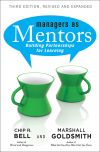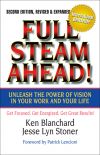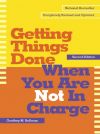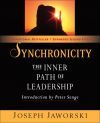Правообладателям!
Представленный фрагмент книги размещен по согласованию с распространителем легального контента ООО "ЛитРес" (не более 20% исходного текста). Если вы считаете, что размещение материала нарушает ваши или чьи-либо права, то сообщите нам об этом.Читателям!
Оплатили, но не знаете что делать дальше?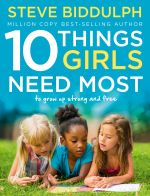
Текст бизнес-книги "10 Things Girls Need Most: To grow up strong and free"
Автор книги: Steve Biddulph
Раздел: Жанр неизвестен
Текущая страница: 1 (всего у книги 1 страниц)


Copyright

Thorsons
An imprint of HarperCollinsPublishers
1 London Bridge Street
London SE1 9GF
www.harpercollins.co.uk
First published by Thorsons 2017
FIRST EDITION
Text © Steve Biddulph 2017
Questionnaire design © Bobby&Co Book Design
Cover layout design © HarperCollinsPublishers Ltd 2017
Cover photograph © FatCamera/Getty Images
A catalogue record of this book is available from the British Library
Steve Biddulph asserts the moral right to be identified as the author of this work
All rights reserved under International and Pan-American Copyright Conventions. By payment of the required fees, you have been granted the nonexclusive, non-transferable right to access and read the text of this e-book on-screen. No part of this text may be reproduced, transmitted, downloaded, decompiled, reverse-engineered, or stored in or introduced into any information storage and retrieval system, in any form or by any means, whether electronic or mechanical, now known or hereafter invented, without the express written permission of HarperCollins e-books.
Find out about HarperCollins and the environment at www.harpercollins.co.uk/green
Source ISBN: 9780008146795
Ebook Edition © April 2017 ISBN: 9780008146801
Version 2017-04-29
HarperCollinsPublishers has made every reasonable effort to ensure that any picture content and written content in this ebook has been included or removed in accordance with the contractual and technological constraints in operation at the time of publication.

Contents
Cover
Title Page
Copyright
A Letter from Steve
Foreword
Your Daughter’s Journey
10 THINGS GIRLS NEED MOST
1. A Secure and Loving Start
2. The Chance to be Wild and Time to be a Child
3. Friendship Skills
4. The Love and Respect of a Dad
5. Spark
6. Aunties
7. A Happy Sexuality
8. Backbone
9. Feminism
10. Spirit
Endnotes
Further Reading
Picture Credits
List of Searchable Terms
Acknowledgements
Other Books by Steve Biddulph
About the Publisher

A letter from Steve


For forty years I’ve worked with parents in talks and workshops, and it is so satisfying, and so much fun, that I wished I could share it with every parent in the world. So I set about thinking how to do so in a book.
What you hold in your hands is the result. You can read it straight through, like any other book, but – if you wish to go further – on every few pages there are opportunities to respond. These are very simple – a self-evaluation quiz, or an idea to give a quick rating to. These instant-response items take you deeper into awareness of how to better help your girl.
As this is an ebook – and you can’t write on your screen – just use a small notebook and give your ratings or answers there. It works just as well. Or if you want a printed record, you can also download the questionnaires at www.stevebiddulph.co.uk/resources. You can print these out and fill them in. They are incredibly useful to discuss with your partner, or sometimes your child as well.
We have field-tested these questions and found that parents love the sudden flashes of insight they can bring. You will find yourself seeing your family more clearly, and, from this, you will become more the parent your daughter needs you to be.
So, please – give it a try and see.
One more thing – it sometimes happens that the questions can bring tears, or other strong emotions. Be gentle with yourself, and know that all of us parents feel this way sometimes. We send our love to you and our admiration for being willing to grow and learn.
Sincerely,



You can also use this book as a discussion guide with your friends. Taking one chapter at a time, you can create your own ongoing support group to help you care for all your daughters together. That’s how girls were meant to be raised – by a tribe.
Foreword
THE BATTLE TO SET GIRLS FREE
You remember that moment, don’t you? Holding your baby daughter in your arms for the very first time. Her eyes wide open, gazing back into yours. Feeling so protective, so proud, so happy. A daughter!
Throughout the last hundred years, things have got better for girls. People fought hard for our daughters to have more equality and opportunity and to be less pushed into narrow boxes of what a girl, or woman, could be. But about ten years ago – it’s hard to say just when – all this started to change. Girls who had flown up in the sunshine of a century of feminism started to go into a nosedive.
Everyone has noticed this – not just psychologists and counsellors, but parents themselves. They say, ‘Fourteen is the new eighteen,’ or ‘They’re growing up too fast.’ Or they just roll their eyes and say, ‘Girls!’
As I am writing this, the Department for Education is reporting that a third of all teenage girls in the UK suffer from depression or anxiety. They are calling it ‘an important and significant trend’. The NHS says the same; they report that 20 per cent of girls are self-harming – three times as many as ten years ago. Not only that; 13 per cent of girls have symptoms of post-traumatic stress – something we associate with serious trauma or harm. Eating disorders, body-hate, having unhappy and unwanted sex: all are on the increase. It’s not all girls, but it’s enough of them to worry about.
We know the causes of this change in girlhood. It’s partly the explosion of social media and the amount of time we spend on screens, but also the pressured and competitive way we live today. The disappearance of spending time with older, wiser, kinder people in the real world, as well as time in nature, being playful in a relaxed, dreamy way that is best for growing young brains.
We know what is needed to help a girl grow up strong and free, and it’s not what television, the internet, magazines or billboards are telling her. It’s also not testing in primary school. Nor it is looks, being hot, being cool, pleasing boys or fitting in to tidy models of corporate success (unless that’s really what she wants!).
So here, from the front line of working with girls and their parents, are the ten things that girls need most. This book works by building self-awareness, clarity and purpose. By enlivening your own parenting instincts. By giving you the best information, then letting YOU choose what to do for YOUR girl, and her friends, and your nieces, granddaughters or students.
It’s a mighty kit bag of tools for liberating your girl. You might even free yourself along the way. After all, we could all do with some liberation.
10 Things Girls Need Most is an interactive book. So here is your first go – what is your gut reaction right now?
(Tick which statement is the closest to how you feel.)
□ 1. Hell no, I don’t want to know! Hide me from all this.
□ 2. I’m nervous, but I will read on. I love my daughter and want to help her.
□ 3. I am stirred up already and want to get kicking. Let me loose!


YOUR DAUGHTER’S JOURNEY
Your daughter is unique. There is no-one like her in the whole world. And she has a unique reason for being here, a purpose to discover and unfold in her life. Your part in this is huge, and it all begins with appreciating her. Seeing her more deeply than anyone else, and loving what you see. Nurturing what is good, and getting to work on what needs to be strengthened.
This self-evaluation will help you to get clear about two things. Firstly – the girl she is now. And secondly – the woman she will become – with your help. It’s a beautiful exercise to do. So, let’s start…
1. I have _____ daughter/s.
If you have more than one daughter, choose one girl to focus on during each exercise throughout the book, then return and do the others later.
2. Her age is:
0123456789101112131415161718192021older? _______
3. Her name is:

The Girl She Is Now
Three things I like and admire most about her are:

What I notice is changing the most about her is:

What I want to give her the most is:

What I think she gives me the most is:

The Woman She Will Become
Now that you have a clear view of your girl, it’s time to look to the destination.
The woman you want her to become.
Imagine your daughter when she is twenty-five years old.
Imagine that she has turned out as you would have hoped in your heart that she would.
What three qualities do you hope that she will have, that people will see in her, or experience in her?

What do you notice when you compare the ‘hoped-for qualities’ and the ones she already has?


Your daughter is unique. There is no-one else like her in the whole world.
WHERE IS SHE NOW?
Now you have focused on what your daughter is like and the goals you have for her, we can get started on helping those goals come true. We can find out exactly where she is on the journey. This will help you to know what is needed right now.
As parents, we know that our mission is not just about getting kids fed, washed, off to school and having fun on weekends. We also know that it’s going somewhere. Every day, little by little, your daughter is moving closer to womanhood. There is a journey that she is on, and you are her guide. So you need to have a map.
In my book Raising Girls, I set out a map of the major stages of girlhood. These stages are now used by thousands of parents around the world. These are simple and you will recognize them if you think about the girls you know.
Zero to two, two to five, five to ten, ten to fourteen, and fourteen to eighteen are each a distinctive stage based on what is the main thing going on at that age. (Of course, they overlap, and the timing varies from child to child – but not a lot!) The stages help you to know what to concentrate on, what matters most.
In the overwhelming time of parenthood, you can easily lose the wood for the trees, the baby with the bathwater, or the teenager behind the temper. The stages help you stay on track.
Here is each stage with its main lesson. Or put another way, the single most important thing to focus on at her age:
| 0–2 | Is she loved and SECURE? |
| 2–5 | Does she feel confident and encouraged to EXPLORE the world and enjoy it? |
| 5–10 | Has she got the skills to make FRIENDS, have fun, and get along with people in general? |
| 10–14 | Who is she, as a UNIQUE person – what are her values and beliefs? |
| 14–18 | Is she PREPARED and trained, practically, to enter adult life? |
The existence of these stages are something parents learn from experience. For example, if a friend asked you to mind their two-year-old for a day, you could expect a busy time. The day might be fun, but not exactly serene. If a fourteen-year-old was joining you for dinner, you might expect a certain awkwardness, mixed with moments of pure delight. The stages are universal, and timeless. And fortunately, we know how to make them go well.
THE QUEST OF GIRLHOOD
There is a beautiful and accurate way of looking at girlhood. It is a ‘quest’ – a journey with a purpose, a path along which she gathers the ingredients of her womanhood. We are her main guides, especially early on, and always there in the background later, just helping it go more easily. In raising a child we always have this dual awareness. We enjoy each day for its own sake. But we also have in our mind the big picture – what is important for her to experience and learn in preparation for the time when we are no longer there to help her.
Knowing the stages is incredibly helpful, because it keeps us to a plan. Our goal is making a wonderful woman. And that’s what the stages do.
So – we start with a simple question.
What age is your daughter right now?
0–2 2–5 5–10 10–14 14–18
Now the important question – since she may have passed through a number of stages, see if you can rate how well they were achieved, in your opinion, using the following scoresheet.
Do this off the cuff, even if you don’t fully understand what the stages mean yet. We’ll return to them in detail later, but this is a starting point.
I’ve inverted the stages so you can see them as a kind of building, with foundations at the bottom. (If your daughter is under two, you can only rank the bottom line. If she is aged from two to five you can rate the second item as well. If she is aged from five to ten the third, ten to fourteen the fourth. and fourteen and over, the fifth. So you have rated all the way up to the age she is.)
Give each life-stage from one to five stars, just as if you were rating a hotel.
| 5. | Trained for adulthood | □ □ □ □ □ | 14–18 years |
| 4. | Found her own self | □ □ □ □ □ | 10–14 years |
| 3. | Good at friendship | □ □ □ □ □ | 5–10 years |
| 2. | Confident to explore | □ □ □ □ □ | 2–5 years |
| 1. | Loved and secure | □ □ □ □ □ | 0–2 years |
Can you see where the gaps are?
Where might she need your help to repair missing or weak stages in her growing up? The neuroplasticity of the human brain means it’s usually possible to put in experiences that were missed the first time around. (The chapters to come will help you to do this.)
Complete this sentence
‘I think we need to work to improve stage  ’
’
HOW ABOUT YOU?
And now the really profound question – and perhaps the most useful. If you are her mum – how well did those stages go in your own growing up years? If you are her dad – same question.
Slow right down now to think about this. It’s going to be a bit sobering for some readers, because our own childhoods might have been disastrous. That’s why we are so motivated to do better for our girls than was done for us.
If you can identify the stages you had trouble with, or times when you did not have your needs met very well, then you will be much more aware and able to get it right with your own girl. This might be the most important thing you do in the whole book.
Mum’s Girlhood Profile
In your own girlhood, how well were these needs met? Give each a rating from one to five stars. Start at the bottom (no. 1) and work your way up.
| 5. | 14–18 Trained for adulthood | □ □ □ □ □ |
| 4. | 10–14 Found her own self | □ □ □ □ □ |
| 3. | 5–10 Good with friends | □ □ □ □ □ |
| 2. | 2–5 Confident to explore | □ □ □ □ □ |
| 1. | 0–2 Loved and secure | □ □ □ □ □ |
This can be important when your daughter is going through a stage that was not easy or well cared for during your own growing up. That means getting some extra support to make sure you can help her in the very best way you can. Don’t worry, there is a lot more in this book about how to do that. You are awake now to the challenge and it’s certainly going to go better because of that.
Dad’s Boyhood Profile
(Or Co-parent if you are a same-sex couple)
While boyhood has a different set of stages and ages to girls, we have kept things simple by just using the same ones. It will still work as a guide. In your childhood, how well were these needs met? Award up to five stars for each point
| 5. | 14–18 Trained for adulthood | □ □ □ □ □ |
| 4. | 10–14 Found his own self | □ □ □ □ □ |
| 3. | 5–10 Good with friends | □ □ □ □ □ |
| 2. | 2–5 Confident to explore | □ □ □ □ □ |
| 1. | 0–2 Loved and secure | □ □ □ □ □ |
ADVANCED EXERCISE
If you are a couple, you might want to try this. Add the scores of your two profiles together. So each row will have a score out of ten.
Combined Mum and Dad (or Partner) Profile
| 5. | Trained for adulthood | □ □ □ □ □ □ □ □ □ □ |
| 4. | Found their own self | □ □ □ □ □ □ □ □ □ □ |
| 3. | Good with friends | □ □ □ □ □ □ □ □ □ □ |
| 2. | Confident to explore | □ □ □ □ □ □ □ □ □ □ |
| 1. | Loved and secure | □ □ □ □ □ □ □ □ □ □ |
If you look at the profile for both of you added together, you might find that you fill in each other’s gaps in a very helpful way. Or not! This is the psychology of your family when combining your strengths and weaknesses. It tells you what you have to work on developing. As long as you have a minimum of six stars – between you – on each stage, then you can probably relax about those stages. If one or more stages look a bit wobbly, then the book, as you go through it, will help you with these.
Our family needs to focus most on the ______________________________ stage.
Be of good cheer! It’s easier to overcome any gaps if you know what they are. In family life, it’s the things you don’t know about yourselves – the blind spots we all have – that cause the biggest problems. Once you see clearly, you have much more power to make changes. Once you know, you are set to give your daughter what she needs (even if you didn’t get it yourself).
“I was horrified to realize, doing these questions, that my daughter’s childhood was a repeat of my own. Too many moves. Men in her life being unreliable. Being lonely and on the outside at school. It gave me a massive wake-up call to think: ‘I have to make it different for her.’ All we do is fight all the time. I am determined to make our lives more positive, and calm, and steady. I want her life to be better than mine.”
Lorna, 42
“It all came down to stress. We were financially secure but just too hurried and hassled. In my childhood we had been poor immigrants, and my parents very busy, but in the here and now, we didn’t need to be so wound up. The questions made me see that we had work to do to make life more happy and focused on everyday moments. It didn’t have to be the struggle that my childhood was.”
Damien, 31
Now, we know exactly where your daughter is. It’s time to begin the main part of the book. The Ten Things Girls Need Most …


Внимание! Это ознакомительный фрагмент книги.
Если начало книги вам понравилось, то полную версию можно приобрести у нашего партнёра - распространителя легального контента ООО "ЛитРес".Правообладателям!
Представленный фрагмент книги размещен по согласованию с распространителем легального контента ООО "ЛитРес" (не более 20% исходного текста). Если вы считаете, что размещение материала нарушает ваши или чьи-либо права, то сообщите нам об этом.Читателям!
Оплатили, но не знаете что делать дальше?


